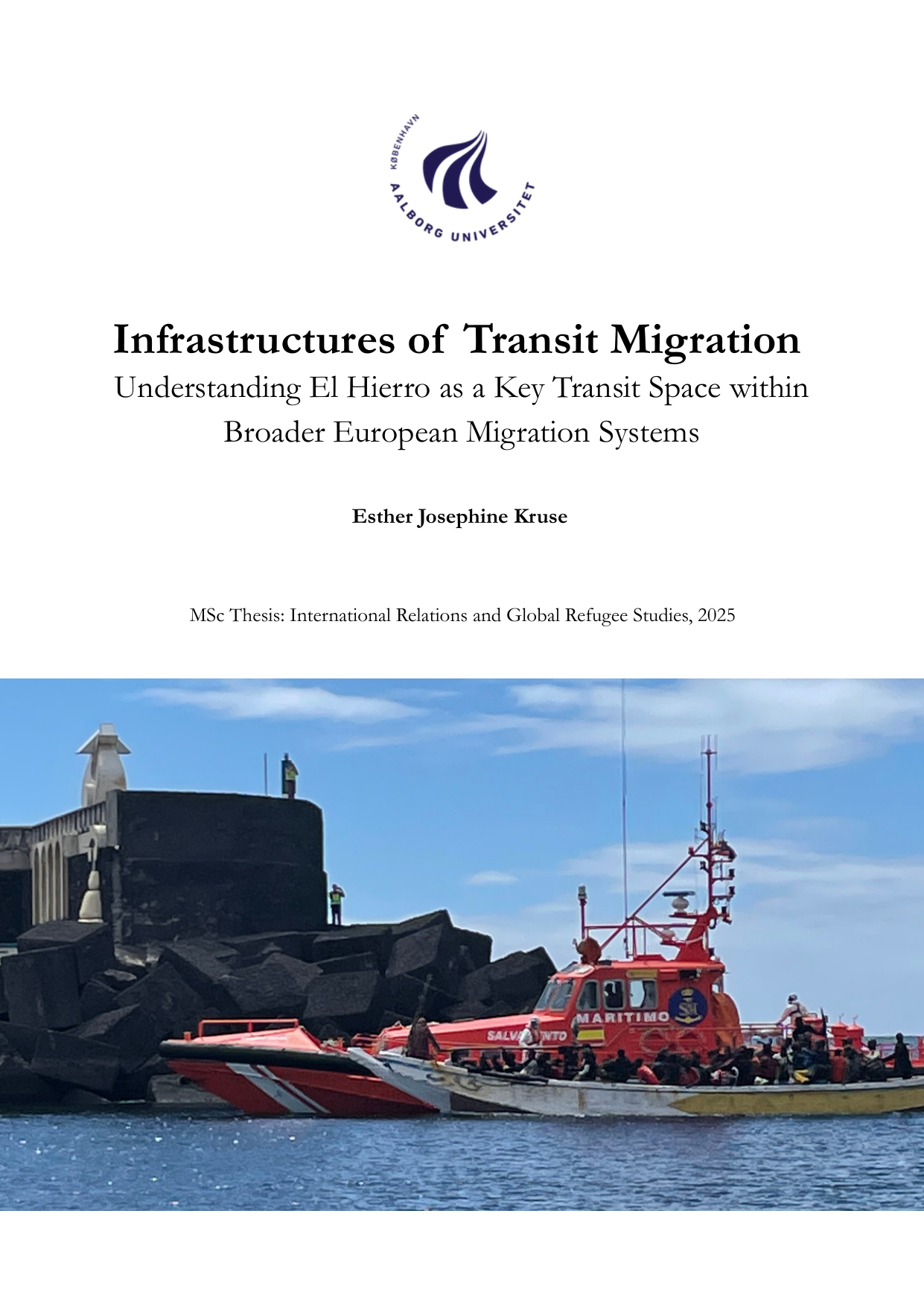
Infrastructures of Transit Migration: Understanding El Hierro as a Key Transit Space within Broader European Migration Systems
Author
Term
4. semester
Education
Publication year
2025
Submitted on
2025-10-14
Pages
52
Abstract
This master’s thesis investigates how transit migration infrastructures shape migrants’ mobility in transit spaces. Looking at the case of El Hierro, it explores how the island became a key transit space within broader European migration regimes. Building on field research conducted on El Hierro in March 2025, the study proposes a new conceptualization of “migration infrastructure” (Xiang & Lindquist, 2010), expanding the notion to better capture the specific conditions and complexities of transit migration. The modified approach, termed “transit migration infrastruc-ture”, analyzes the interplay of regulatory, humanitarian, social, and commercial dimensions across multiple scales (local, regional, national, and supranational). The findings suggest that the multi-scalar interdependencies and overlapping responsibilities among actors operating within these dimensions define El Hierro’s dual role, functioning simultaneously as a humanitarian arri-val space and as part of the externalized EU border regime. El Hierro’s residents carry the im-mediate humanitarian responsibilities yet are excluded from direct decision-making processes, leading to a sense of both obligation and political marginalization. The analysis shows how migra-tion policies affect people’s lives far beyond physical borders and highlights how the local com-munity, despite frustration and constraint, continues to meet arriving migrants with dignity and solidarity. By mapping the intersections between regulations, institutions, and civil society, this master’s thesis aims to contribute to the ongoing debate and offers a conceptual contribution toward a more nuanced understanding of transit spaces as dynamic and infrastructurally generat-ed sites of migration.
Keywords
Documents
